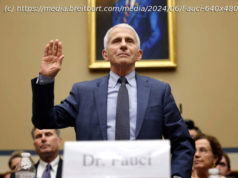Why did the newspaper of record deem it worthwhile to launch a three-week investigation into the life stories of a Supreme Court nominee’s minor children?
The New York Times ran an in-depth story Monday on Judge Amy Coney Barrett’s adoptions from Haiti. The story, which is the result of more than three weeks’ investigation by the Times, turns up nothing in the way of bombshell revelations. It does, however, fly in the face of pleas by adoption experts not to make children’s lives the center of a politically motivated investigation. Whether from restraint or lack of content, the Times article avoids being an overt hit piece. On first blush it reads almost like a personal profile — which is notable, considering it was written without cooperation or comment from its subject. The Times uses quotes from Barrett and her family in prior speeches and interviews to insert their voices into the story. But it’s inescapably clear that reporters went on a fishing expedition, combing through the records of the Barretts’ adoption agency, interviewing families who adopted from Haiti contemporaneously, and seeking out information on the orphanage from which the children were adopted. Throughout the article, the implication is clear: a family’s decision to adopt internationally is inherently controversial, subject to suspicion, and open to a public inquiry. While it makes no concrete accusations against the Barrett family, the story casts subtle aspersions against their adoption through the inclusion of several generalized details, devoid of context. To the outside observer, the Times adoption story looks like a piece that couldn’t quite find the facts to fit its original narrative but ran with what it could find, letting its readers fill in the blanks. Let’s address five specific ways this article falls flat. The Times called the orphanage from which the Barretts adopted “typical of many in Haiti,” adding, “many children weren’t literal orphans — their parents simply couldn’t afford to care for them.” This characterization is misleading to the uninitiated reader. First, it broad-brushes the complex issue of how to define an orphan. UNICEF defines an orphan as “a child under 18 years of age who has lost one or both parents to any cause of death” (emphasis added). U.S. immigration law also recognizes a child who “has a sole or surviving parent who is unable to care for the child” as an orphan. In many cultures and situations, the death of one parent — especially the mother of a young child — is enough to render the child unparented and in need of adoption. In other cases, a child may have two living parents but is growing up alone. The Christian Alliance for Orphans deems these children “social orphans,” noting that there are millions of them throughout the world. While a naïve observer might conclude that American families should simply give these parents money rather than adopting the child, for most social orphans the answer isn’t that simple, as poverty often isn’t the sole issue. Abuse, neglect, and family dysfunction can all play a role, as we frequently see in the U.
Домой
United States
USA — Science 5 Big Problems With NYT's Investigation Of Amy Coney Barrett’s Children






